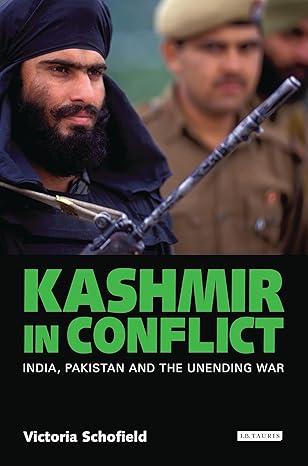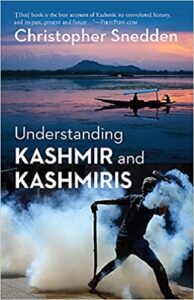Kashmir means different things to different people. For many outside the region, it evokes images of breathtaking landscapes, snow-covered mountains, the Dal Lake with its shikaras, traditional pherans, saffron fields, and the fiery red of chinar leaves. Others associate it with militancy, curfews, slogans of azadi, and images of stone-pelting youth. But for many Kashmiris, it is something else entirely, a suffocating space, watched over by an overwhelming military presence, lined with concertina wires, barricades, and bunkers. It is about endless cordon and search operations and about the disappeared sons and husbands, and the ever-present fear of what might happen next.
Kashmir is not a place that can be understood from a single lens. That’s why I continue to read and gather as many perspectives as possible. This book is yet another step in my ongoing quest to understand the complexities of the Kashmir conflict.
Kashmir in Conflict, by Victoria Schofield, takes the readers on a brief journey to understand the genesis of the Kashmir “conflict”. The book begins with a brief history of ancient and medieval Kashmir, covering the Mughals and moving to the modern history of Kashmir dominated by Sikh rule, and later to Maharaja Gulab Singh. She explains the circumstances under which Jammu and Kashmir was handed over to Gulab Singh. The journey from Gulab Singh to Hari Singh, the accession to India, the volatile 90s, and the political developments till 2002.
The book further talks about India and Pakistan’s independence and how things changed for the Maharaja of J&K. His ambiguity and vacillation whether to join India, Pakistan or remain an independent sate made things uncertain for J&K. The author delves deep into the negotiations between Maharaja and Indian representatives and other circumstances that led Maharaja to accede to India under certain conditions. Those interested in knowing about the events around Independence, especially regarding J&K, will get some rich insights. One would understand that things were far more complex than we assume them to be.
The chapter on accession is both detailed and informative. The author provides the perspective of India, Pakistan, and the Britishers who oversaw the drawing of the boundary of India and Pakistan. She provides the circumstances under which the accession was done and the conditions for it, and the special status it was accorded post accession. Importantly, the book highlights how the people of Kashmir, despite being the primary stakeholders, were not consulted or involved in the decision-making process. It also documents how India and Pakistan did not fulfill the conditions to have a plebiscite in Kashmir. And to this date, this has been a bone of contention for the Kashmiri People with the Indian government.
The author provides a detailed account of how the 1980s started militancy in Kashmir because of growing feelings of unjust among the Kashmiri youth. While reading the book, one would know the reasons behind the unrest beyond the common narrative we hear in the news and from politicians. One would also know the reason for the rise of armed insurgency, the attacks on Pandits and their subsequent migration from the valley, and the growing presence of religious fanaticism in the Kashmir valley. The author also examines how the government of the day, both state and central, reacted to the armed insurgency and the steps they took to control and eliminate it. She provides an in-depth analysis of the late 1980s and mid-1990s, when Kashmir was at the peak of militancy.
Kashmir in Conflict is a well-researched book exploring the various reasons for the conflict in Kashmir. It is an informative and insightful book for anyone who wants to know about the genesis of the Kashmir conflict.
About The Author
Victoria Schofield is a historian and independent commentator on international affairs, with specialist knowledge of South Asia. Her books include “Kashmir in Conflict: India, Pakistan and the Unending War” and “Afghan Frontier: at the Crossroads of Conflict.”


